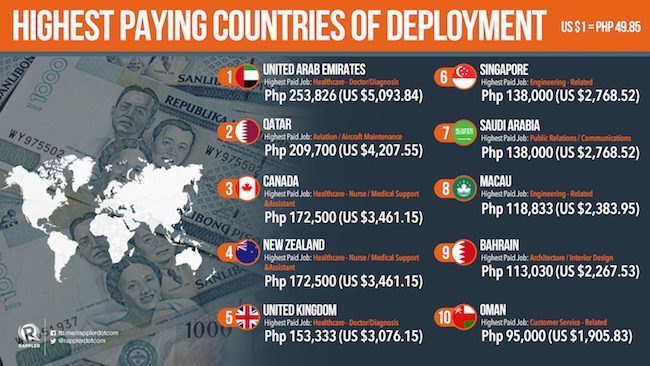SUMMARY
This is AI generated summarization, which may have errors. For context, always refer to the full article.

MANILA, Philippines – On June 5, Monday, Gulf states including Saudi Arabia, the United Arab Emirates, Bahrain, and Egypt cut ties with Qatar in the region’s most serious diplomatic crisis in years.
The Gulf countries accused gas-rich Qatar of supporting terrorism in the region. Qatar, in response, said that the accusations hurled against them were ‘unjustified’ and aimed to put Doha under political “guardianship.”
The move caused air, land, sea links to and from Qatar to close. Qatari nationals will be banned from entering the UAE, while Qataris in UAE were given two weeks to leave. Several airlines, including Etihad Airways and Emirates, announced they will suspend flights to and from Qatar.
Egypt also announced the closure of its ports and airports to Qatari carriers.
Economists say that the diplomatic row could result to serious economic and political implications in the region, raising fears of repercussions to Filipinos living in Qatar.
But just how many Filipinos in Qatar may be affected by Qatar’s diplomatic crisis? Here are some fast facts on the Filipino community in Qatar:
Filipinos are the fourth biggest group of foreign workers in Qatar
The Qatar economy relies heavily on migrant labor, resulting to a high number of expatriates that outnumbers its natives. According to a 2017 population report from seasoned Qatar-based journalist Priya DSouza, there are as many as 260,000 Filipinos living in Qatar as of January 2017, making it the fourth biggest group of foreign workers in Qatar.
Qatar also has the fourth biggest Filipino population in the Middle East, next only to Saudi Arabia, UAE, and Kuwait, according to 2015 data from the Philippine Statistics Authority.
Qatar is third biggest OFW destination in the Middle East
The Filipino community is also one of Qatar’s fastest growing foreign communities, second only to Bangladesh, according to Priya DSouza’s report.
Data from the Philippine Overseas Employment Agency (POEA) also show that Qatar has consistently been one of the top destinations for landbased OFWs in both 2014 and 2015.
In 2015 alone, there were at least 133,169 OFWs deployed to Qatar, a 16.29% increase from 2014. Some 49,161 of this were new hires. Another 84,008 were rehires.
| 2015 | 2014 | |
| Deployed landbased OFWs – Qatar | 133,169 | 114,511 |
The surge in numbers can be attributed to the rising demand for Filipino workers in the fields of construction as the Arab country builds infrastructure in preparation for its hosting of the 2022 FIFA World Cup.
One of the top destination countries for domestic helpers
Data from the Overseas Workers Welfare Administration (OWWA) also show a consistently fast growing number of Filipino household service workers (HSWs) being hired in Qatar every year since 2013, when numbers declined due to an unofficial ban on new Filipino visas.
This makes Qatar one of the top destinations for HSWs, together with Saudi Arabia, Kuwait, and Hong Kong.
Workabroad.ph’s 2nd highest paying country of deployment

Workabroad.ph’s 2016 Overseas Salary Report also named Qatar as the second highest paying country of deployment (based on monthly rates), next only to the UAE.
Those in the aviation industry are paid the highest, according to the report. – Rappler.com
Add a comment
How does this make you feel?
There are no comments yet. Add your comment to start the conversation.